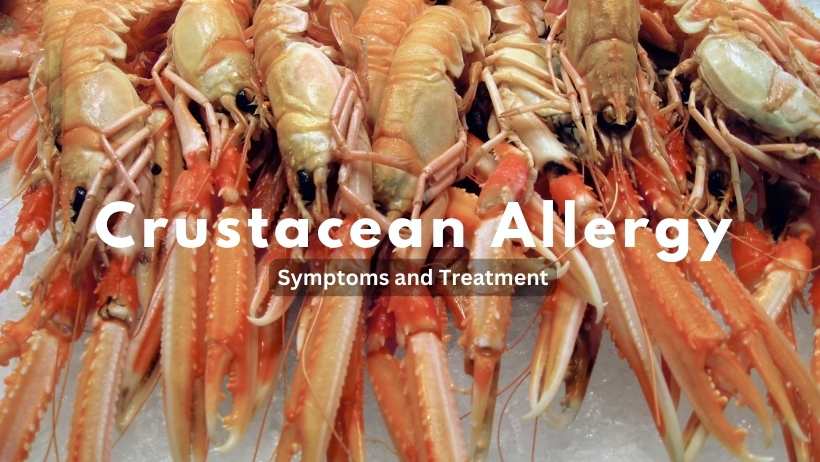IgE is a protein found in the blood. It is the main component of our body’s immune system in protection against allergies. One of the IgE-mediated food allergies is Crustacean allergy. This article tries to understand the signs to watch out for and the treatment to follow to deal with this condition.

Crustacean Allergy Symptoms
The severity of the allergic reactions and their appearance depend on the immune system status of individuals. Mistaken identification of certain nutrients in substances gets then marked by this system as allergens. As the body combats to remove the substance, its allergic signs become apparent. Some of the top crustacean allergy symptoms are as follows:
- Fainting
- Diarrhea
- Dizziness
- Vomiting
- Nausea
- Shortness of breath
- Wheezing
- Difficulty in breathing
- Eczema
- Hives
- Itching
- Swelling in the throat, tongue, lips, and face
In 75 percent of cases, patients suffering from this allergy are also prone to mollusk allergy. Such a condition is called cross-reactivity.
These symptoms can occur minutes to hours after consuming or coming in contact with crustaceans. Immediate medical attention is required, mainly if multiple symptoms co-occur. Carrying an epinephrine auto-injector and seeking emergency care is necessary in such cases.
Understanding Crustacean Allergy
Crustacean allergy is triggered by proteins found in shellfish, such as shrimp, crab, and lobster. The primary allergen, tropomyosin, is responsible for reactions. Other proteins like arginine kinase and myosin light chain also cause allergic responses.
RAST is a type of blood test that can be carried out when a person observes the above signs in his body after eating crustaceans. It confirms the allergy-causing chemical and its respective allergy. A prick test is also a skin test to find these allergic signs.
Crustacean Allergy Treatment
All food allergies are incurable as of now. They are treatable, however. The symptoms are identified, and care is taken to avoid the foods that cause this allergy.
This complication remains for life. However, depending upon the condition of an individual’s immune system, the signs and their severity vary.
Preventive Measures
If you are suffering from this allergy, read all food labels carefully. Many processed foods might contain crustacean products, even if it does not seem obvious. When dining out, always inform the staff about your allergy to ensure no cross-contamination.
The best way to avoid this condition is to gain more awareness about the different aspects of this allergy. The foods to prevent direct allergy and cross-reactivity should be known to avoid them.
Antihistamines are the drugs that can be carried by people prone to this allergy. Epinephrine (adrenaline) is a life-saving medication for severe reactions and should be taken by those at risk of anaphylaxis. It can provide the patient sufficient time to consult the doctor for help after getting accidentally exposed to the allergen. Below are more detailed measures –
| Preventive Measure | Description |
|---|---|
| Allergen Alert Bracelets | Wearing a medical alert bracelet inform others of your allergy symptoms and they can reach you in case of an emergency. |
| Safe Cooking Practices | Use separate utensils and cookware for seafood to avoid cross-contamination. |
| Travel Precautions | When traveling, especially abroad, carry a card that states your allergy in the local language. |
| Regular Check-ups | Regularly visit an allergist to monitor your allergy. |
